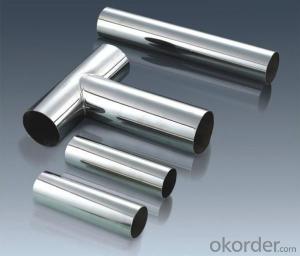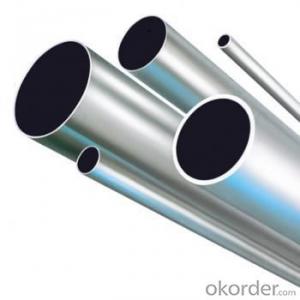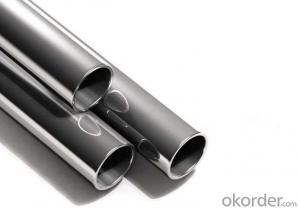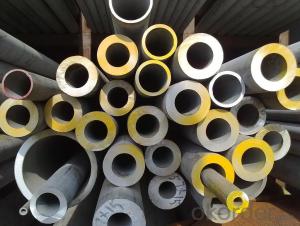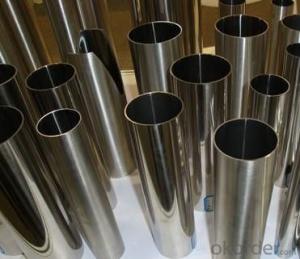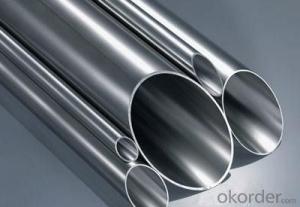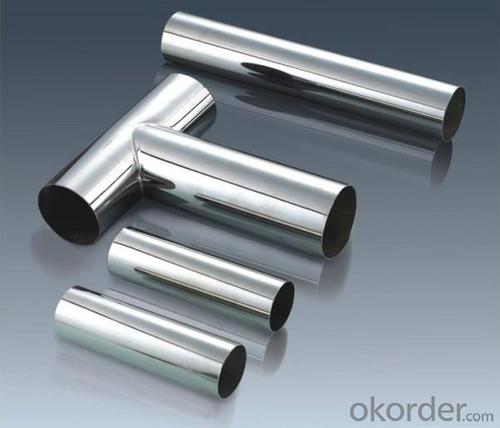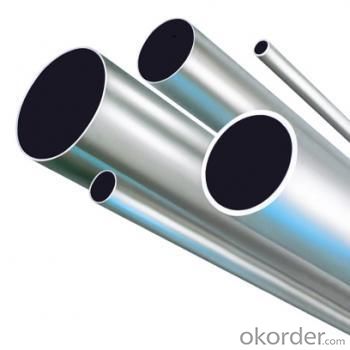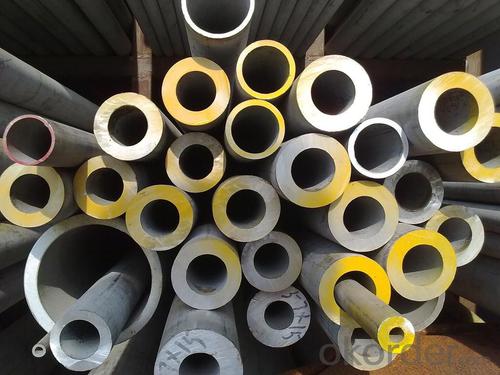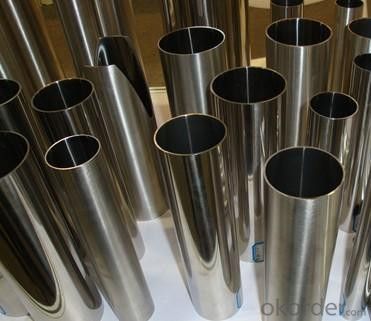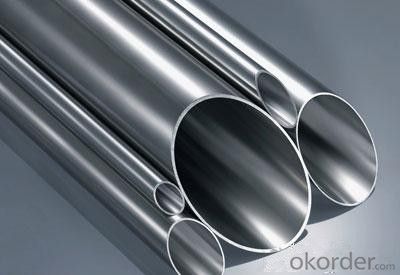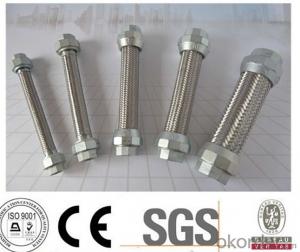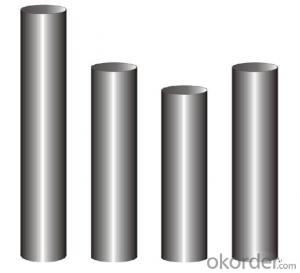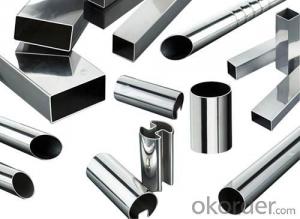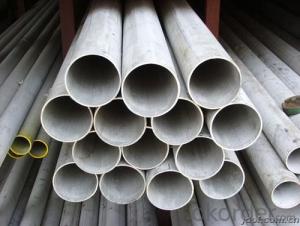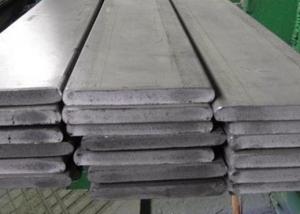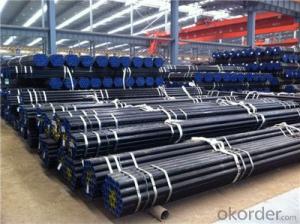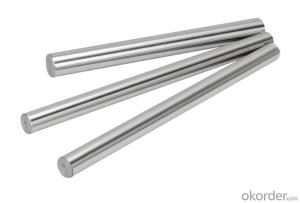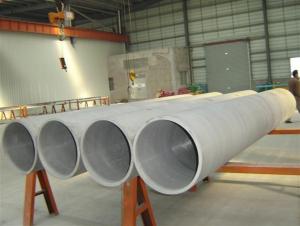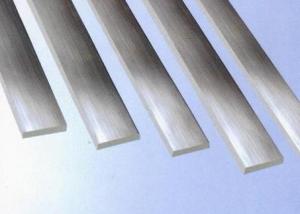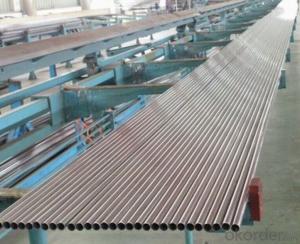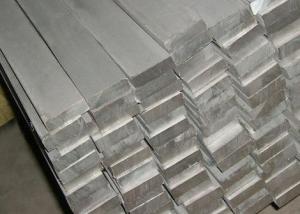304 Stainless Steel Pipe
- Loading Port:
- China main port
- Payment Terms:
- TT OR LC
- Min Order Qty:
- 5 m.t.
- Supply Capability:
- 100000 m.t./month
OKorder Service Pledge
OKorder Financial Service
You Might Also Like

304 stainless steel pipe price list
Our Advantages
You can get a competitive price with high quality.
We can provide sample for your evaluation.
We can provide Mill test certificate.
Your enquiry will get quickist and efficient response.
Introduction of grade 304
304 stainless steel material is a kind of common stainless steel materials, corrosion prevention is better than 200 series stainless steel materials. High resistance to high temperature is also better, it can reach to 1000-1200 degrees. 304 stainless steel has good corrosion,corrosion resistance and good resistance to intergranular corrosion. For oxidizing acid, obtained in the experiment, the concentration of 65% or less under the boiling temperature of nitric acid, 304 stainless steel has a strong corrosion resistance. To most organic and inorganic acid and alkali solution with good corrosion resistance ability.
Physical properties
Tensile strength σb (MPa): 520
Conditions yield strength 0.2 sigma (MPa) :205
Elongation δ5 (%) :40
Section shrinkage ψ (%): 60
Hardness: ≤187HB ≤90HRB≤200HV
Some details of our products
| Product: | 304 stainless steel pipe price list |
| Grade: | 304; sus304; 1.4301; |
| Standard: | ASTM,AISI,JIS,EN,DIN,GB |
| Surface treatment: | 8k, ba, hl |
| Thickness: | 0.4-30mm |
| Outer Diameter | 20-400mm |
| Productivity: | 900MT/Month |
| Products range | hot rolled stainless steel sheet, hot rolled stainless steel coil, hot rolled flat steel,cold rolled stainless steel sheet, cold rolled stainless steel coil, Industrial tube, decorative tube |
Trade terms
| Product | 304 stainless steel pipe price list |
| MOQ: | 5 Ton |
| Payment Term: | 1. 30%T/T in advance ,the balance against the B/L copy 2. 30%T/T in advance ,the balance against the L/C at sight 3. 100%L/C at sight |
| Price Term: | FOB/CFR/CIF |
| Delivery: | 1.10 days after receiving the deposit of T/T 2.10 days after receiving the L/C original |
| Packaging: | Standard Export Packing |
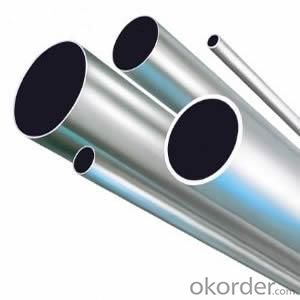
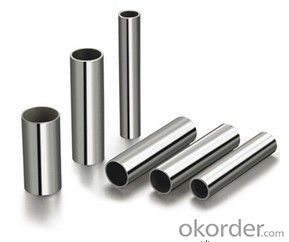
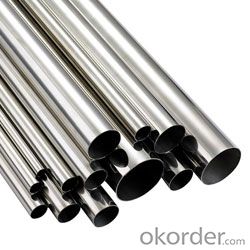
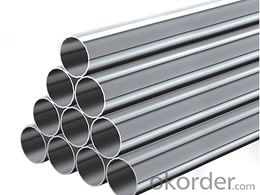
- Q: What are the differences in the properties of hot-rolled and cold-rolled stainless steel tubes?
- Stainless steel tube with hot and cold points, hot rolling is made by stainless steel tube billet heated to red state, through processing a mold, which is cold-rolled stainless steel pipe billet collocation through different mould at room temperature, finally by drawing rolling method, stainless steel tube working together the size of the need to.
- Q: Are stainless steel pipes suitable for liquid storage tanks?
- Yes, stainless steel pipes are suitable for liquid storage tanks. Stainless steel has excellent corrosion resistance properties, making it ideal for storing various liquids, including water, chemicals, and food products. The material is highly resistant to rust, oxidation, and staining, ensuring that the stored liquids remain uncontaminated. Stainless steel pipes also have high strength and durability, allowing them to withstand the pressure and weight of the stored liquids. Additionally, stainless steel is easy to clean and maintain, making it a reliable choice for liquid storage applications.
- Q: What's the difference between stainless steel pipe and stainless steel composite pipe?
- Stainless steel is also divided into several kinds of 200201300301304,The market is generally 301 material, 304 of the best results, followed by 301.
- Q: What is the difference between seamless and seamless stainless steel pipes?
- The only difference between seamless and seamless stainless steel pipes is that seamless pipes are made without any seams or welds, while seamless stainless steel pipes are specifically made from stainless steel.
- Q: Where is the difference between seamless steel pipe and welded pipe?
- Seamless steel tube: seamless steel pipe is made of steel ingot or solid tube blank through piercing, then made by hot rolling, cold rolling or cold casting. Specifications for seamless steel tubes are expressed in millimeters of outer diameter * wall thickness. Seamless steel pipe, hot-rolled and cold-rolled (DIAL) seamless steel pipe two categories.Hot rolled seamless steel tubes are divided into ordinary steel tubes, low and medium pressure boiler tubes, high pressure boiler tubes, alloy steel tubes, stainless steel pipes, oil cracking pipes, geological steel pipes and other steel pipes, etc..
- Q: Are stainless steel pipes suitable for beer brewing applications?
- Stainless steel pipes are a highly suitable option for beer brewing applications. They are widely favored in the brewing industry because of their exceptional resistance to corrosion, long-lasting durability, and hygienic properties. The smooth surfaces of these pipes prevent the accumulation of bacteria, yeast, and other impurities, thereby guaranteeing a brewing environment that is both clean and safe. Moreover, stainless steel pipes boast high resistance to elevated temperatures, making them indispensable for various brewing processes like boiling and sterilization. Furthermore, stainless steel is an inert material, signifying that it does not interact with the beer, thereby ensuring the preservation of the taste and quality of the final product. Ultimately, stainless steel pipes deliver the necessary attributes for beer brewing applications and are extensively utilized in the industry.
- Q: 316 stainless steel pipe wall mirror polishing, the smaller the roughness, the better.
- Steel pipe is purchased separately, and then polished to find manufacturers alone, can meet the requirements,The cost is very high. To tell you the truth, I don't know.Specializing in sanitary stainless steel tube, stainless steel tube, precision sanitary stainless steel tube and stainless steel tube precision tube production and sales, the main material: stainless steel material: 0Cr18Ni9 (304 stainless steel tube) and 00Cr19Ni10 (304L stainless steel tube (316), stainless steel tube), 00Cr17Ni14Mo2 (GB 316L stainless steel tube), the products are widely used in instrumentation pharmaceutical machinery, food machinery, auto parts, pneumatic components, beverage, beer, drinking water, air purification and biological engineering and other fields.
- Q: What is the difference between 304 and 304H stainless steel pipes?
- The carbon content is the main factor distinguishing 304 and 304H stainless steel pipes. Both materials consist of iron, chromium, and nickel, but 304H stainless steel has a higher carbon content compared to 304 stainless steel. This increased carbon content in 304H enhances its strength and resistance to deformation at high temperatures, making it more suitable for applications involving elevated temperatures. The higher carbon content in 304H stainless steel pipes also improves their ability to resist sensitization during welding. Sensitization refers to the formation of chromium carbides at the grain boundaries, which can lead to intergranular corrosion and reduced mechanical properties. By incorporating a higher carbon content, 304H stainless steel pipes can effectively resist this sensitization phenomenon and maintain their structural integrity even at high temperatures. Both 304 and 304H stainless steel pipes exhibit excellent corrosion resistance, good weldability, and high strength. They find extensive use in various industries, including oil and gas, chemical, food processing, and pharmaceuticals. However, it is worth noting that 304H stainless steel pipes are typically recommended for applications requiring high-temperature strength, while 304 stainless steel pipes are more commonly used for general-purpose applications. In conclusion, the carbon content distinguishes 304 and 304H stainless steel pipes. 304H stainless steel pipes have a higher carbon content, which enhances their high-temperature strength and resistance to sensitization during welding. These differences should be taken into account when selecting the appropriate stainless steel pipe for a specific application.
- Q: Are stainless steel pipes resistant to chemical corrosion?
- Stainless steel pipes possess resistance against chemical corrosion. This attribute is a result of the abundant chromium content within stainless steel, which generates a safeguarding oxide layer on the pipe's surface. This layer acts as a barrier, effectively obstructing chemical substances from interacting with the steel beneath and inducing corrosion. Moreover, stainless steel pipes exhibit resistance against alternative corrosion types, including rusting, thereby establishing their widespread utilization across industrial, commercial, and residential sectors where exposure to chemical substances is anticipated.
- Q: How do stainless steel pipes differ from other types of pipes?
- Stainless steel pipes differ from other types of pipes in several ways. Firstly, stainless steel pipes are known for their exceptional corrosion resistance. The presence of chromium in stainless steel forms a protective layer on the surface, preventing rust and corrosion even in harsh environments. This makes stainless steel pipes highly durable and long-lasting compared to other types of pipes. Secondly, stainless steel pipes have high strength and are able to withstand significant pressure and temperature variations. This is particularly important in industries where pipes are subjected to high levels of stress or extreme conditions. Stainless steel pipes can handle these conditions without compromising their structural integrity. Additionally, stainless steel pipes are highly versatile and can be used in a wide range of applications. They are commonly used in industries such as oil and gas, chemical processing, food and beverage, pharmaceuticals, and construction. Stainless steel pipes can handle different types of fluids, including corrosive substances, acids, and gases, making them suitable for various industries and applications. Furthermore, stainless steel pipes have excellent hygienic properties. They are easy to clean and maintain, making them ideal for applications where cleanliness is crucial, such as in the food and beverage industry or in medical facilities. The smooth surface of stainless steel pipes also prevents the accumulation of bacteria and other contaminants. Lastly, stainless steel pipes are aesthetically pleasing and offer a modern and sleek appearance. This makes them suitable for architectural and decorative purposes, such as in building structures, handrails, or furniture. In summary, stainless steel pipes differ from other types of pipes due to their corrosion resistance, high strength, versatility, hygienic properties, and aesthetic appeal. These characteristics make stainless steel pipes a popular choice in various industries and applications.
Send your message to us
304 Stainless Steel Pipe
- Loading Port:
- China main port
- Payment Terms:
- TT OR LC
- Min Order Qty:
- 5 m.t.
- Supply Capability:
- 100000 m.t./month
OKorder Service Pledge
OKorder Financial Service
Similar products
Hot products
Hot Searches
Related keywords
